
Mayan Culture in Lake Atitlan
Lake Atitlan, a place where the Gods of the mountain meet the life-giving lake, and magic touches every soul that enters. With the world getting smaller by the day and western culture permeating every corner of the globe now. There is one place, the quickly changing world seems to have less of effect, and that is in Lake Atitlan. Mayan Shamans are still the first person the locals call when they have health issues, and magic is liberally felt throughout the ancient supervolcanic valley.
The Mother in the Water, the Magic of the Mountains
If you travel 3-hours by car to the heart of the Sierra Madre Mountains; you will find the beating soul of Lake Atitlan in the local Mayan people. There are many names that the people here give to the lake, 'the place of the water', 'the place where the colors of the rainbow come from', and even 'place of the gringo'.
While the small villages that dot the edges of this 11.8 x 6 miles wide (19x10km) lake, the gringos (or a comical term for a non-native) have tales of mysticism and magic and deep spiritual connection to this area just as the local Mayans do.
Backpackers and anthropologists frequently visit this area, and many who did not believe the influence of the other-worldly in this place - often leave believers after visiting. Stories and accounts of strange and vivid dreams happen while staying at this popular Yoga retreat. Mayan mythology is still told in reverence and whispers and still holds a very strong place in the hearts of the locals.

Mayans in Lake Atitlan
Despite having so much western influence, the people here thrive, and live off of the tourism that is brought to this isolated part of Guatemala. Their roots into their Mayan culture still go as deep as the 1,049 foot (320m) lake. In order to preserve their culture, they are discouraged from marrying outsiders - and also wear the traditional dress. They have made their travel niche in the world but conserving and preserving the core values of their culture & made it their selling point.
It is difficult to know the exact time that the Mayans inhabited the area, due to the two active volcanos and earthquakes that have happened in this region. There is, however, an archaeological site called Chuitinamit, also known as Chiya. Chiya is known to have served as the capital of the Tz’utujil for about 150 years, beginning in 1400 AD.
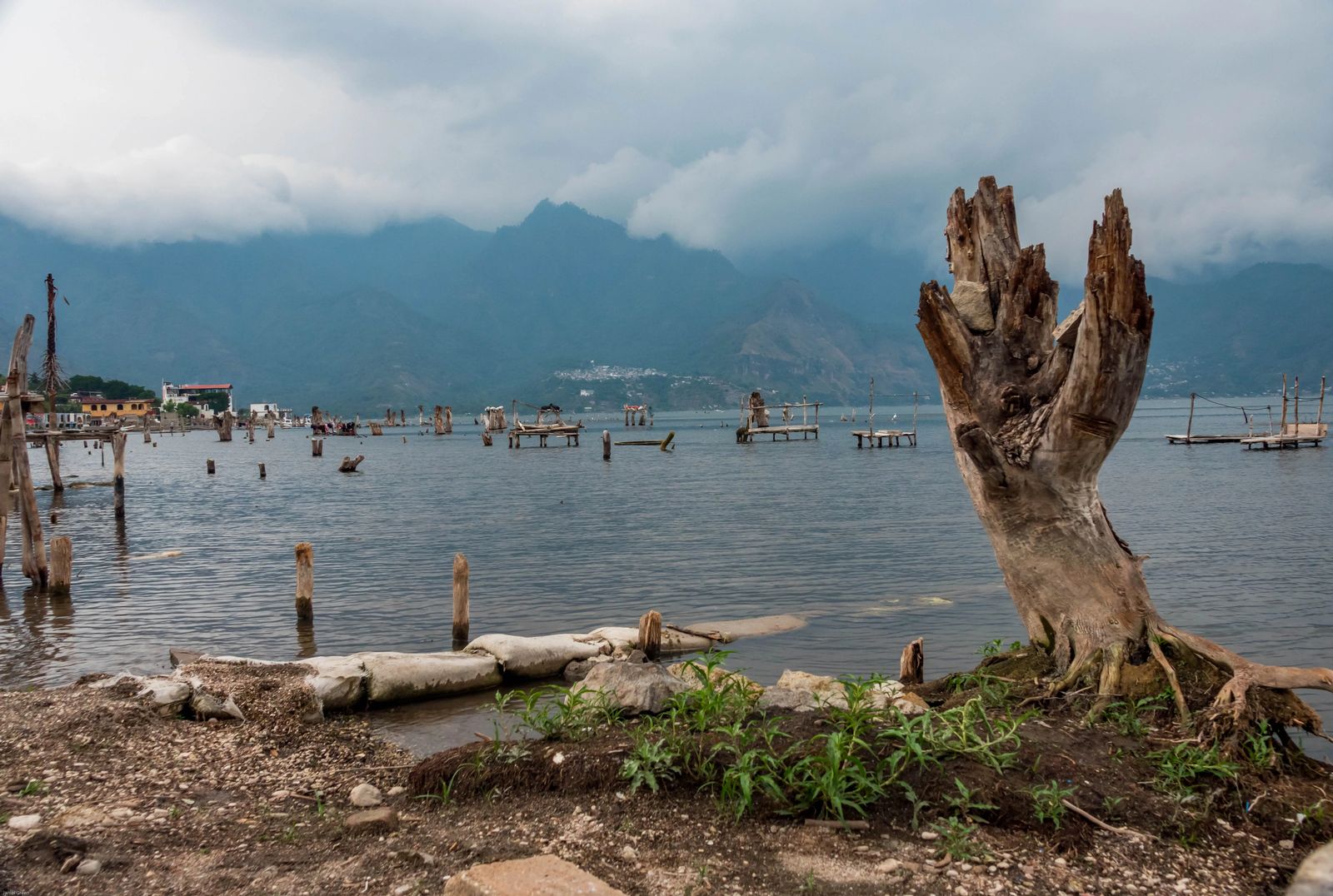
The Gods of the Mountains, The Lifegiving Lake
Mayans are known for worshiping all things connected with nature. Four animals are assigned to each person when they are born, and as they age they become more known and represent different parts of their life. These spiritual animals are called Nuuals. Corn is the giver of life, and you will often see it represented on drawings, used in ceremonies and hanging on houses.
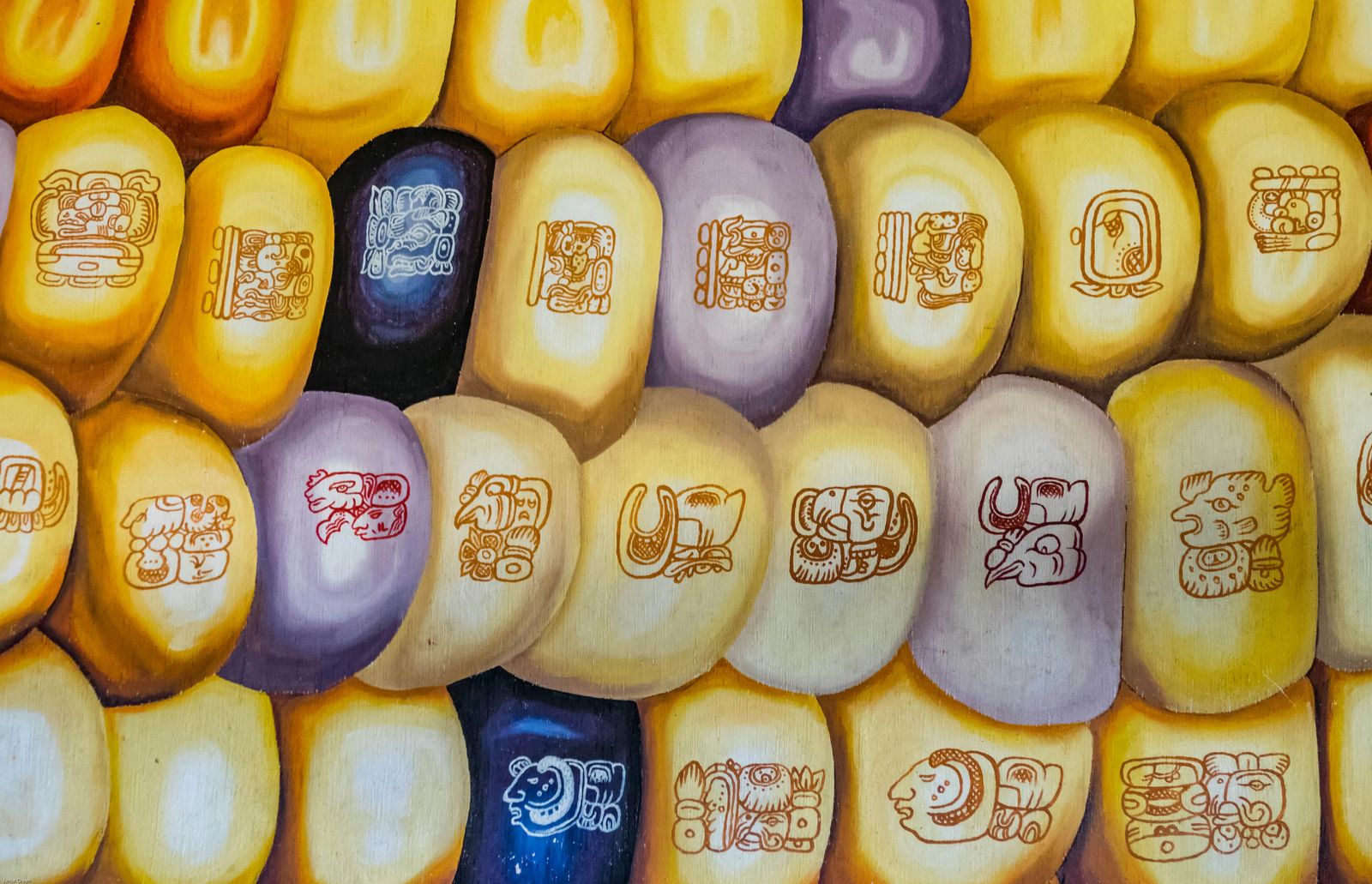
Fire is known as the great purifier, the fruit of the land, the eggs of the chicken, the Gods in the mountains with their storms and thunder, and even the life-giving waters of the lake are all prayed to and for - for what the Mayans needed.
As the Spanish conquerors moved in, the Mayans were made slaves, placed into special clothing that is now considered traditional - but was used to distinguish the local natives as slaves.

There are still elements to the clothing that retain their Mayan roots, and Nuuals are still sewn into clothing as a way to give strength and power to the individual that wears it.
When I came to Lake Atitlan, I didn't realize how strong the Mayan culture here was. I didn't realize there were so many dialects of the Mayan language, and that it is no closer to Spanish than it is to French. Locals and those in the most remote villages, still needed translators to be able to interact with me while I was there helping a friend spread the word about Empowering Mayan Women in San Pedro.
The cultures here rely so heavily on tourists, to come and explore these areas. It helps to put food on the table, get pills for the back pain and arthritis that plagues the older generations from years of carrying heavy bags of coffee, beans, and other produce up and down the steep mountains.
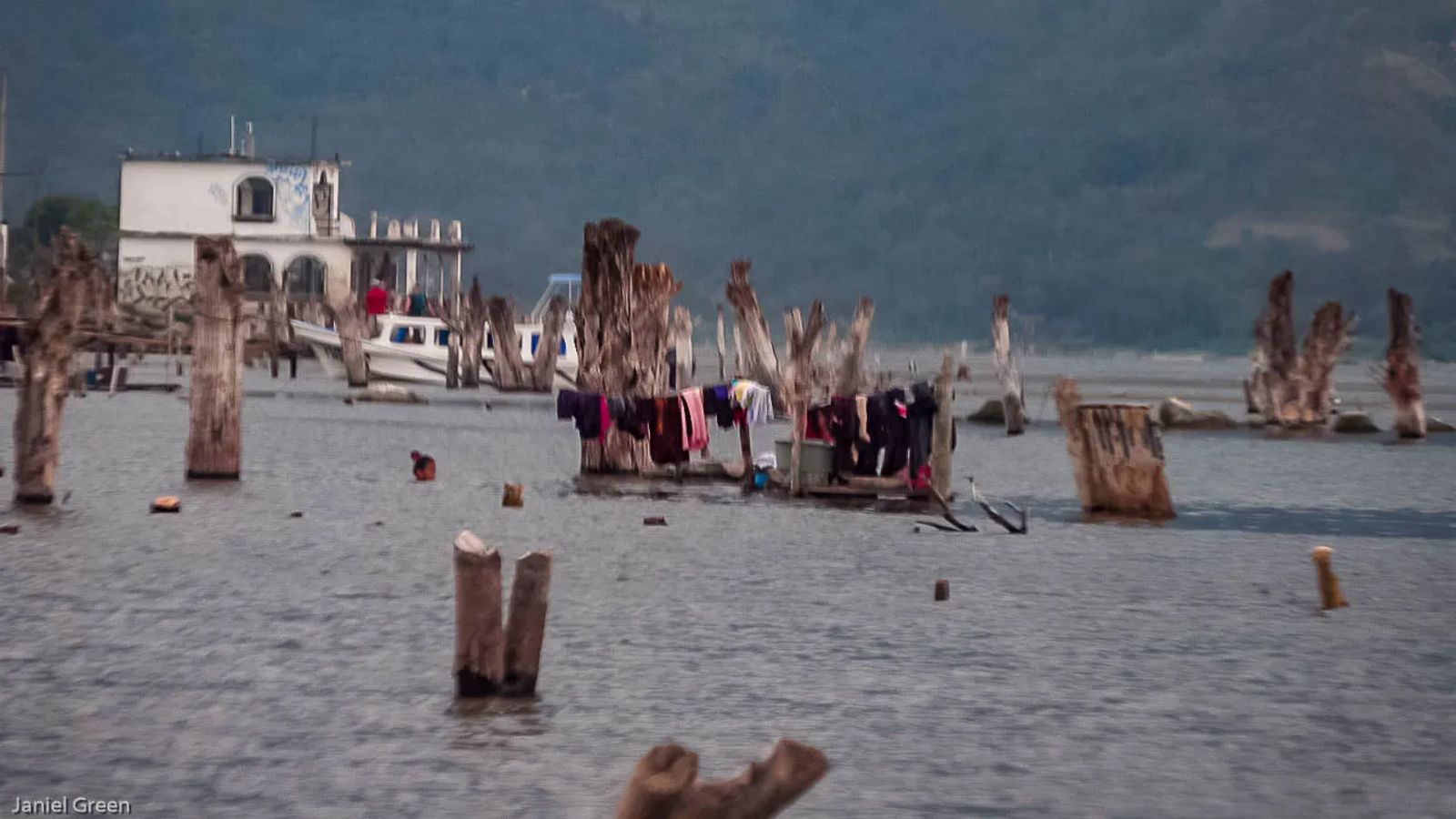
They also heavily rely on Lake Atitlan for washing clothes, transportation to and from major villages to sell their clothing. The tiny Lanchans, or boats, will run across the lake - even with 6 foot swells rocking the boat. Women and men alike fall to their knees in the cramped space and pray that they will make it safely across. The lake is refreshed slightly every year during the rainy season, but this vital piece of their culture may be dying.
A Dying Lake Atitlan
A major earthquake in 1976 left a crack in the bottom of the lake allowing water to seep away into the crust of the earth, locals watched, horrified as the lake dropped nearly 6ft (2m) in one month. It isn't just the dropping waterline, it is also a deadly bacteria that has infected the lake - turning it from a brilliant blue, to a sewer green.
The catastrophic slow death of this lake started when non-native black bass was introduced into the water to lure tourists to the area. These ended up eating the entire food chain of rare Pato Poc duck, leading to the extinction of Atitlan Grebe a rare bird that would have kept the deadly bacteria at bay.
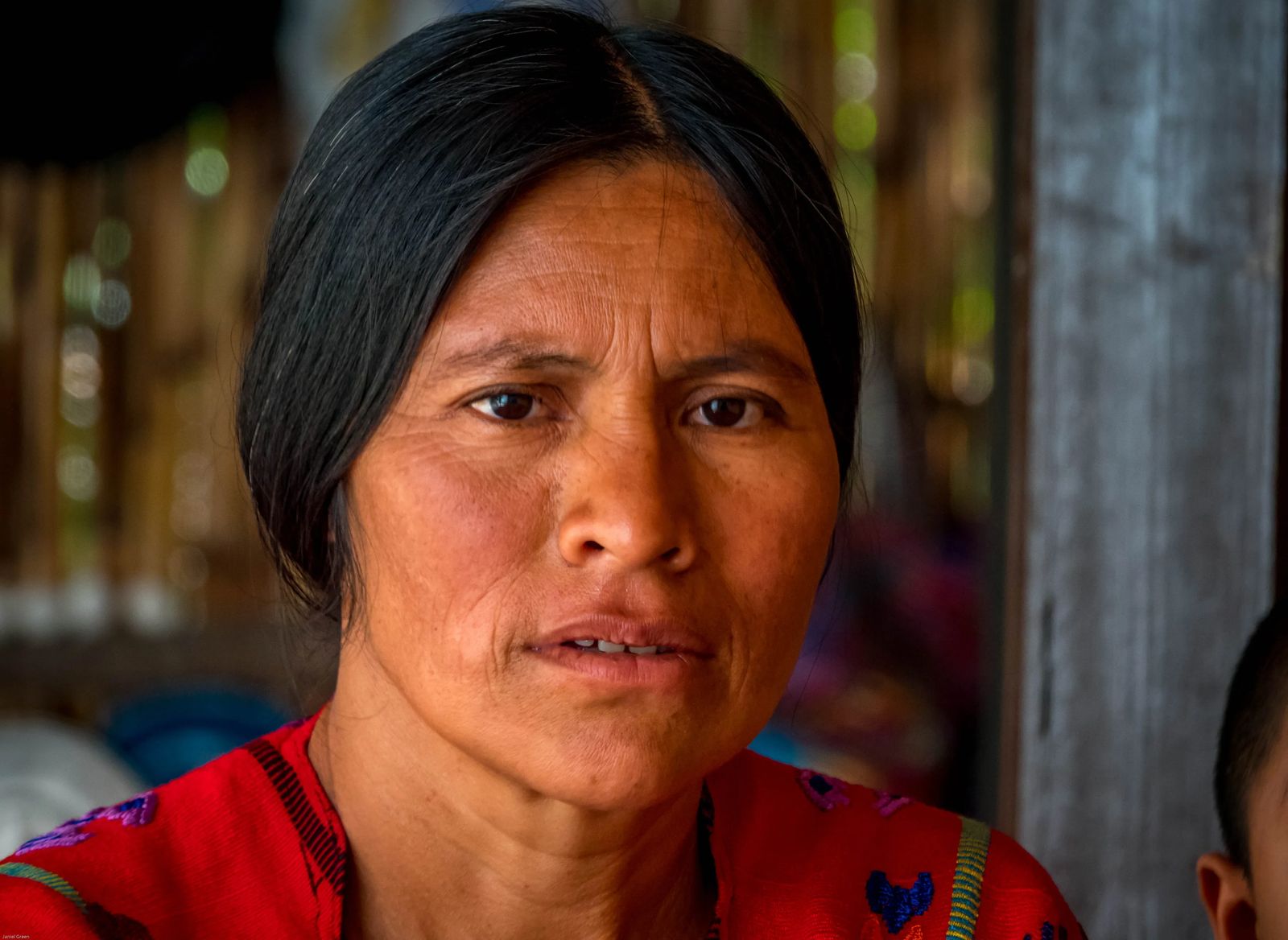
Phosphorus rich Fertilizer that the poorest farmers here use, waste from local hospitals pours into the lake almost daily. This ends up feeding the cyanobacteria that can produce cyanotoxins, which are extremely harmful to certain species and can cause harm to humans as well.
Despite all of this, local Mayans will come and clear a space in the mornings and evenings to do what they must. You can see and hear the slapping and sloshing of the locals at the lake, washing and beating their clothes. Stray dogs play on the shores, and people can still be seen trying to fish. Despite the danger, it is the only source of water in which they are able to clean their clothing, fish, and rely on for their daily life.
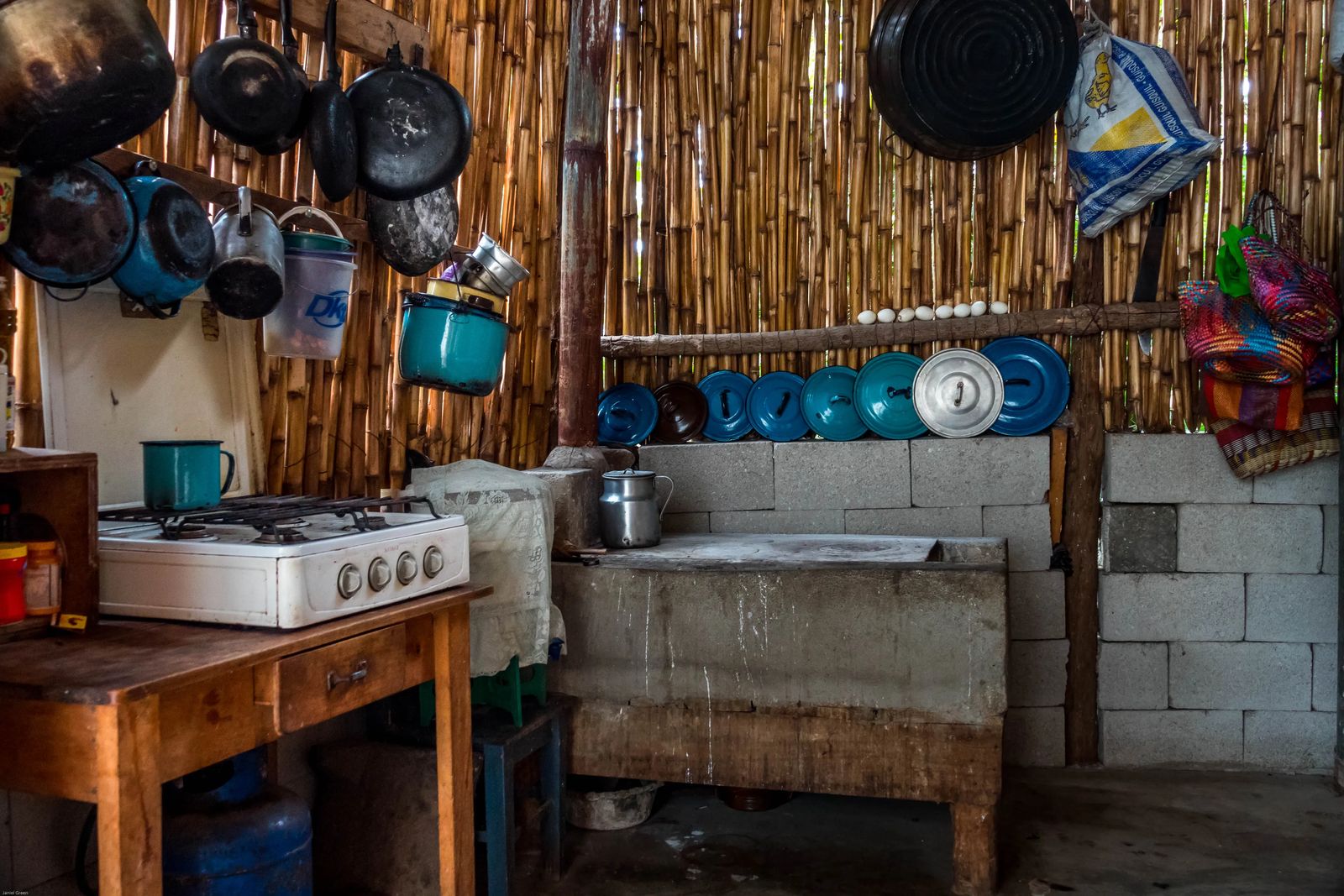
Daily Life in Lake Atitlan
I couldn't believe the explosion of color surrounding me when I visited San Pedro, a small city on the shores of Lake Atitlan. From the buildings to the signs, to the people. Mayan Women dressed in their colorful shirts wandering the streets, each shirt exhibiting a different color/arrangement/Nuual that represents their village.
It is common for a family to not have food on the table, but they will dress very well. There is a belief here that how you take care of yourself and the way you dress is one of the most important things you can do.
The men dress in western wear more commonly now, but in traditional gatherings will wear white pants, broad embroidered belts, and colorful mountain shirts.
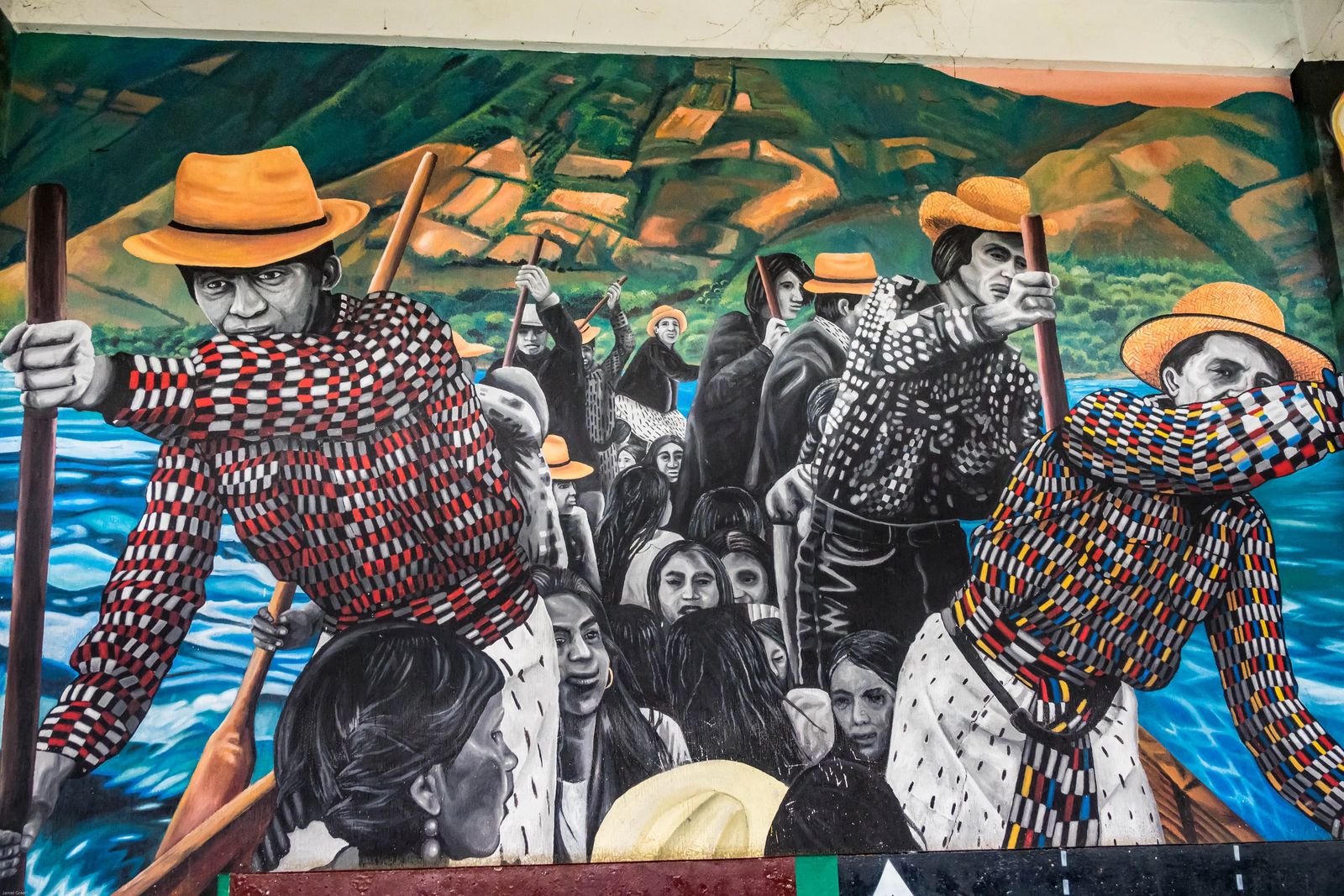
The Daily Work
The work varies, but consists of mostly men working the paid jobs as it is typically considered the woman's job to be home with the kids or cooking. Be sure to read how my friend, Sheri Keller from She Rides Dragons is trying to empower women in San Pedro to work through her company.
Many of the jobs that the men are hired to do there require knowing Spanish because of the tourists that come to Lake Atitlan for Yoga retreats. Because of this, and many tourists who stay, the Spanish schools in this area are quite good and this is also where many women like Dora Abelina González Gonzalez are allowed to teach Spanish.
If the women don't know Spanish, or are unable to speak it - they often speak a dialect of the Mayan language and revert to selling tortillas, textiles, ceramics and agricultural products.
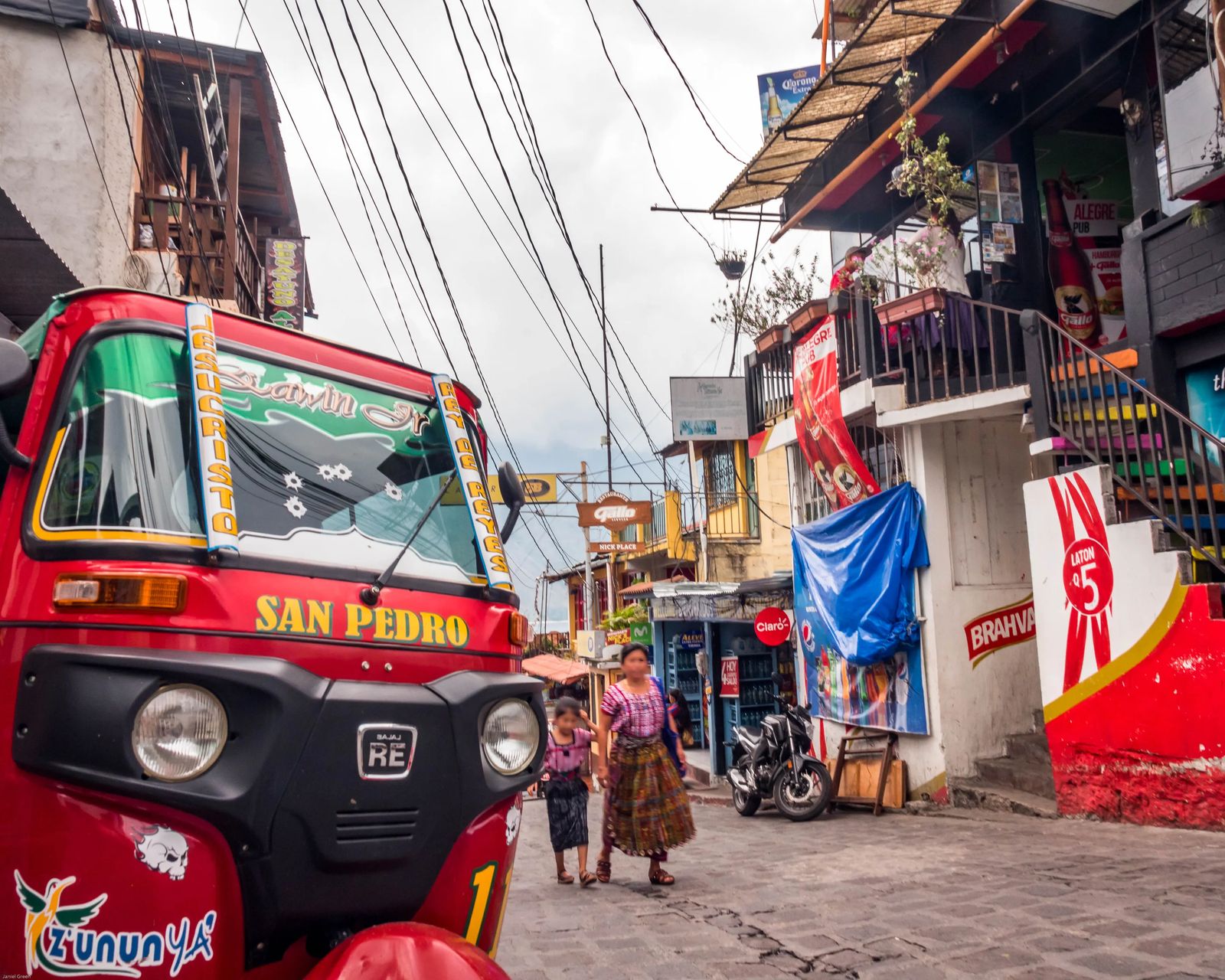
Agriculture
Agriculture in this area is the next biggest source of income for many locals. The volcanic soil is rich in nutrients and allows beans, onions, tomatoes, squash, garlic, strawberries, avocados, chiles, cucumbers, pitaya, and coffee beans to grow.
If you look to the surrounding mountains, you might see lines of crops clear up on the mountainside. This isn't a unique feature to the local flora, it is a man made perfect farming line of crops. I learned the higher up the farms and land were, the cheaper the land was for the farmers – but deaths during the rainy season are quite common due to the steep slopes.
Healthcare in Lake Atitlan
The beauty and abundance of the surrounding area, and the constant feeling of peace and calm in the area. Made it a wonder people here could be afflicted by health maladies just as commonly, if not more than those in the states.

Being a Physician Assistant, I wanted to see what a pharmacy looked like in this area. To get Advil, or even Tylenol you had to go to the Pharmacy and just ask for what you needed. If you need Xanax, well that is readily available as well. While the medications may be varied, and sometimes shocking at how locals are able to treat themselves so easily; these things can be highly regulated in the States.
I watched and listened as a woman and her mother asked the local pharmacist what she could take for her back pain. Xanax was suggested to help her relax, Tylenol was suggested when the women said that it wasn't anxiety. I heard them describe the pain, and knew that the pain was likely coming from her neck and radiating down her arms and to the middle of her back. I humbly suggested medication and told them in Spanish that I was like a doctor in the USA. They asked a few more questions, and then had to barter for the price on the medication. I kicked myself mentally for not bringing my wallet, as we were just going to leisurely stroll through the last hours of the produce market. I desperately wanted to pay for their medication, or help in some way, other than just giving my opinion.
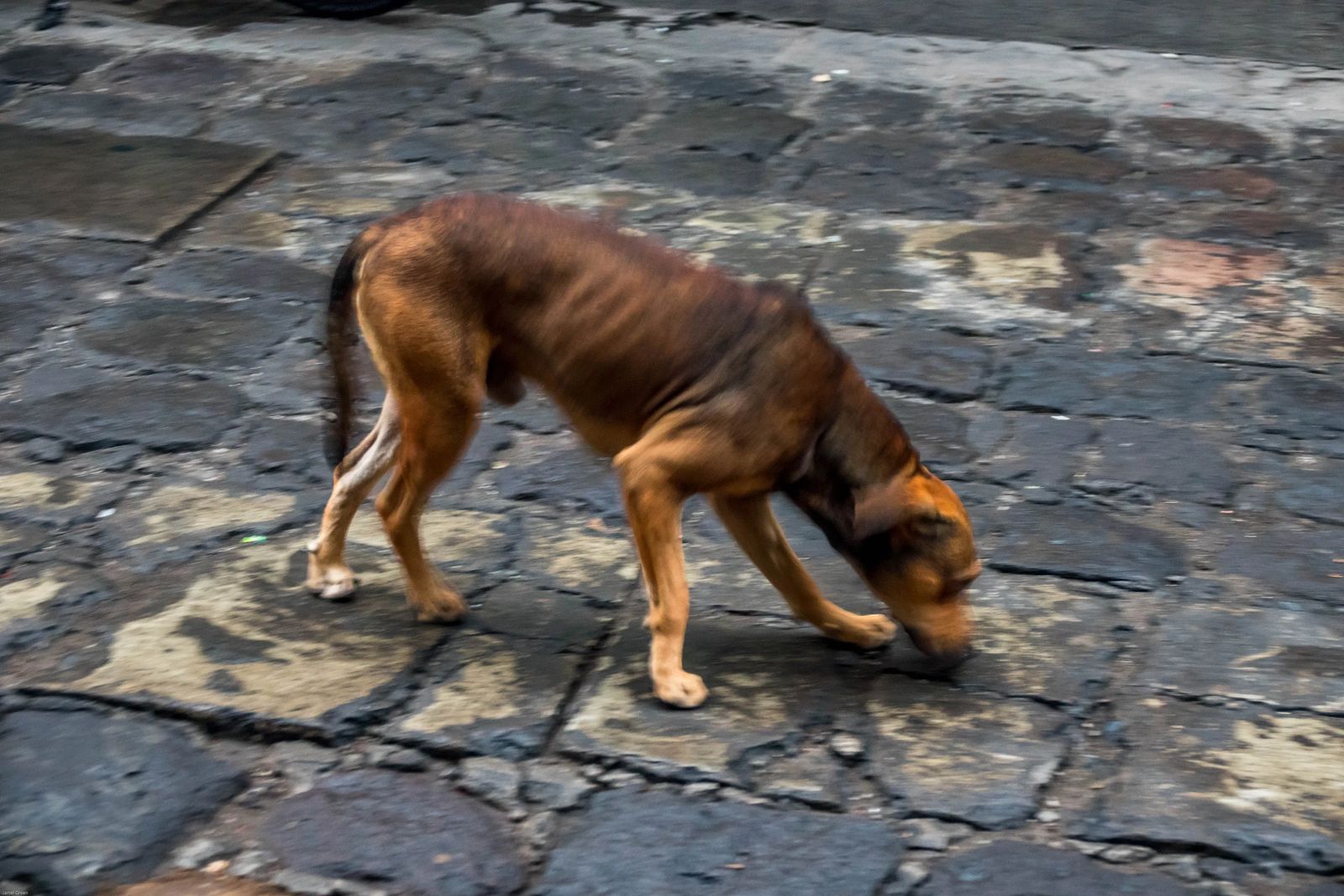
As I was leaving, they asked me if I had a clinic they could come see me at. You see, her mother had Diabetes, and they couldn't afford the medication. They wanted some ideas on how to control her blood sugars naturally. It broke my heart that the education, and medical services in this area were lacking so readily. That the women had to barter with the pharmacist over 2 pills to help with what I assumed was arthritis from carrying massive bags on their heads up and down the steep slopes of the villages. I don't think I wanted anything more at that moment than to stay for an additional 3 weeks and just answer questions and help educate those in this village.
It isn't just arthritis though, parasites here are quite common. The water supply is not considered clean, and you have to boil, filter, bleach, and minimize water usage. If you want clean water to drink, you can buy gallons of it at a nearby store. Then you are left to carry it back to your house.
With so few westernized medicine resources, medications, and lack of education - the locals tend to turn to their Mayan roots for healing and guidance. A Mayan Shaman has a vast knowledge of local plants, remedies for common ailments, and has been taught from his father and/or her mother before her - for generations on how to naturally heal. Often components of what they have discovered for healing common ailments have been modernized and are used in medical treatments in western medicine as well
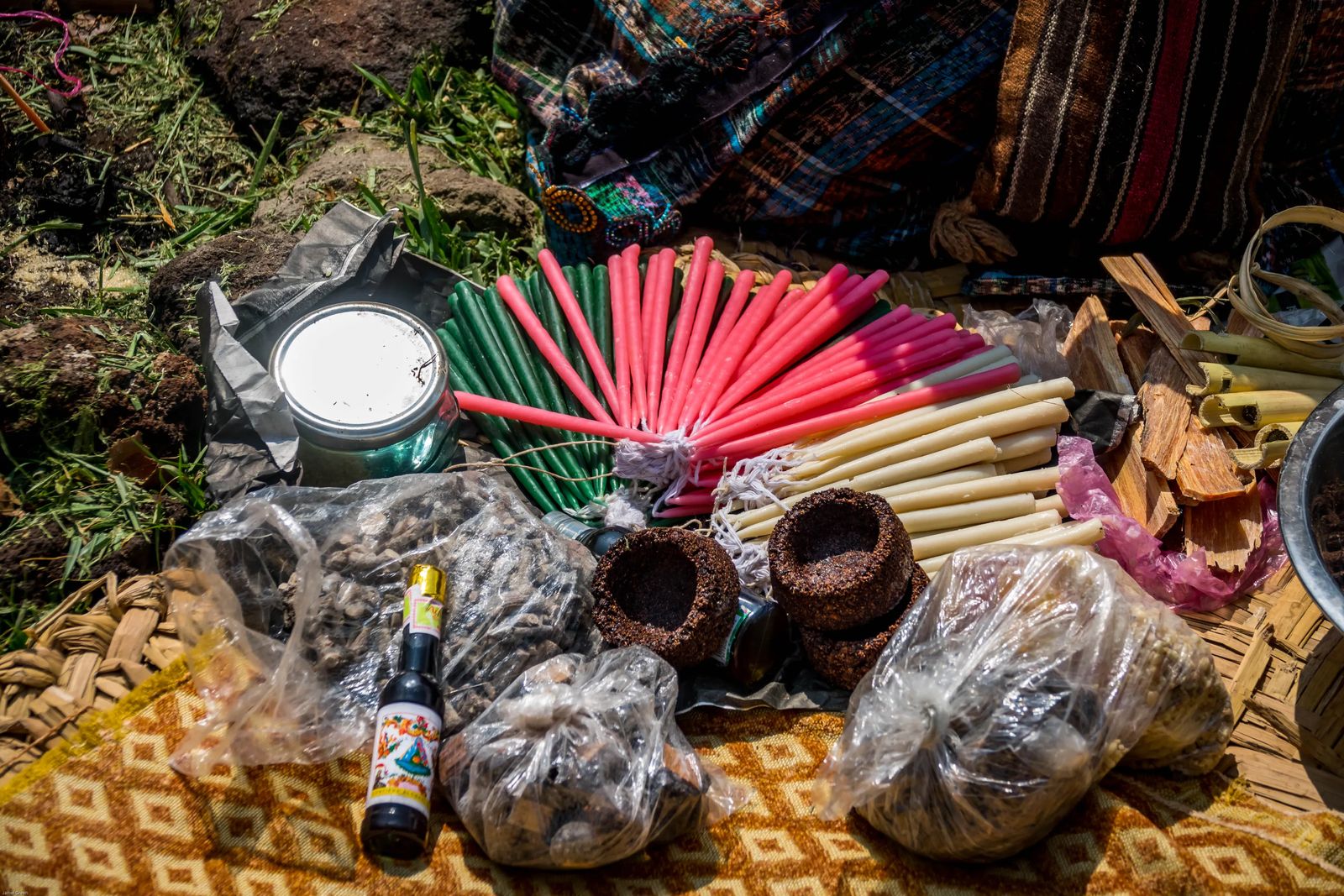
Meeting A Mayan Shaman
I decided to meet with a local Mayan Shaman in the area that my friend Sheri Keller knew. I had to pay for supplies, but the Shamans in the area consider it a calling to do the type of work that they do. They typically do not accept payment, and if they do, they will use it to buy supplies for someone who needs them - but cannot afford the Shaman services. If you want to 'pay them' then bring a meaningful gift, or pay it forward for someone else, or at the very least take them to dinner.
While I won't go into great detail in this post, I will address my truly humbling experience with the Shaman in another article. The long of the short of it is that I came to San Pedro La Laguna because I wanted to pay it forward. Of all the years I spent in Physician Assitant School, of all the years I have labored, been blessed, had people come into my life at the right time, the trauma of Rape I endured, the death of my Grandma, my father leaving to live a life I never dreamed he would - the last few years have been the hardest. There was a mental block within me that I felt was prohibiting me from having meaningful relationships, being able to connect with my family again, and ultimately healing from the pain of my trauma. I was worried about so many things in the future and was mentally trying some things to each other that was inhibiting me from moving forward with life.
I let my own pre-conceived ideas of what I thought 'real medicine' was go, and opened my heart and mind to this Mayan Shaman. I begged whatever power lay with the mountains of Lake Atitlan to help heal me, help me get past the blockade of what happened that wouldn't seem to budge.
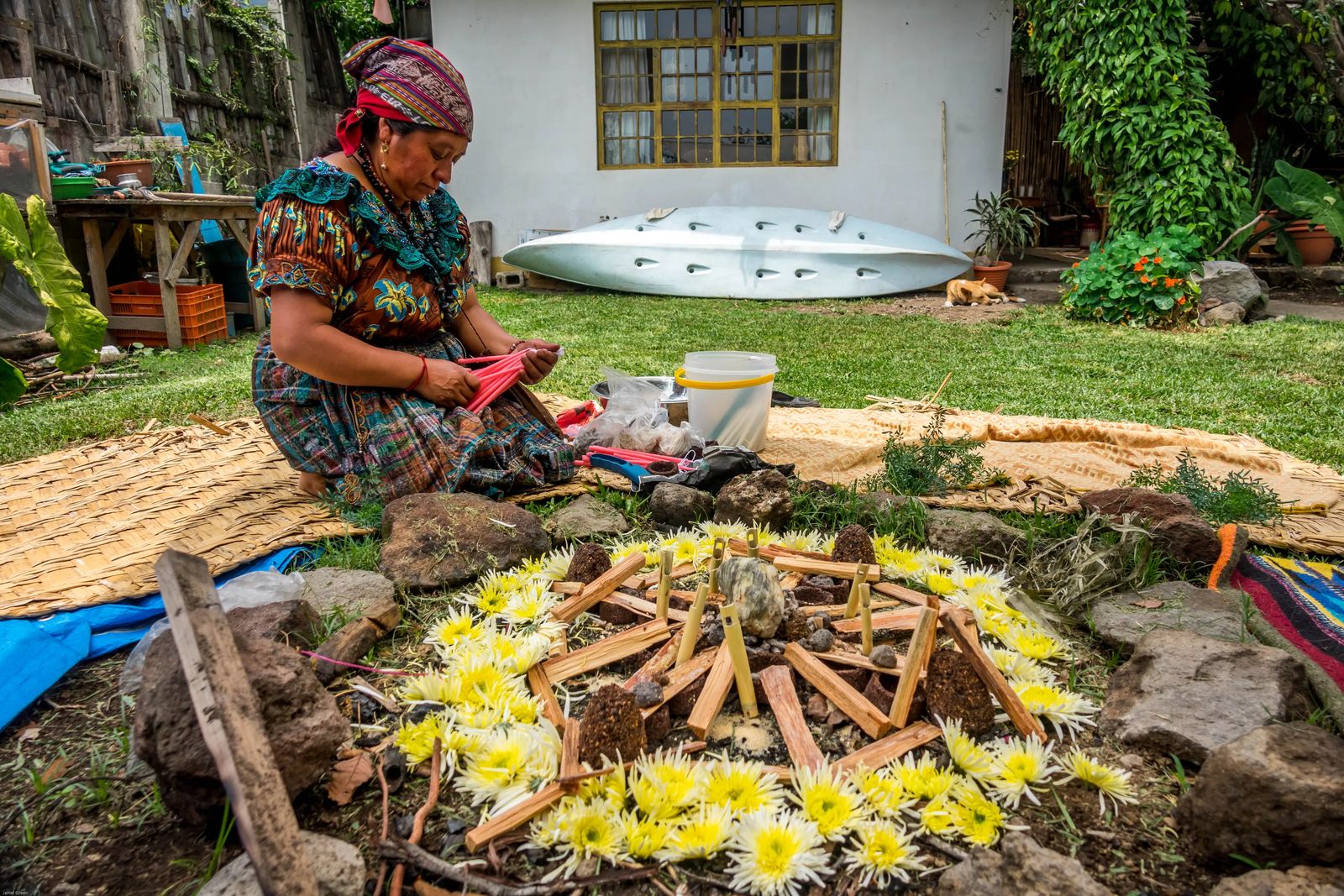
She arranged the flowers, she lit the palo santo, burned the special resin, rubbed me with oils, ingredients, said prayers in Mayan, and our hearts connected on a very intimate level. I did what she asked when she asked, I let go of my personal space and in the end - a weight I asked to be lifted was indeed lifted.
As many of our minds do when something akin to 'magic' happens, I doubted, I took it with a grain of salt. Yet, I still believe that the barriers she said were inhibiting me, would no longer be an issue.
We cried together when she left, she was empathetic and said that it was very heavy what I brought to our session together - but she was grateful I called her. She apparently has to hear many stories of women in the area, who have yet to be impacted by the #metoo movement that has taken place in the United States.
Leaving the Magic in of the Mountains
I came to Lake Atitlan as a skeptic with an open mind, and a scientific assessment of what I experienced. When I left San Pedro, after only four days of witnessing the beautiful Mayan Culture in Lake Atitlan - I realized how lucky my life was. My heart felt light again, I could feel love for the people there when I hadn't felt love in a long time. Now several months later, I am dating again, I have reconnected with my family, I laugh, I feel hope and most of all I believe once again that good things can happen - and maybe everything does happen for a reason.

While the Mayan culture may be isolated, and often forgotten by the rat race of life in the surrounding cities. I am grateful for the chance I had to witness such a humble, hard-working, kind, and generous way of living.
While it may not look and act exactly like the ancient ancestors, being able to be a witness of a living history in Lake Atitlan was one of the greatest experiences of my life. It is an experience I would recommend to those with an open heart and mind. There is so much good that could and should be done in the area there, and the people will give it back ten-fold if you let them.
Despite time, western culture, polotics, weather, volcano, earthquakes, and so many other elements and factors against them, the Mayan people survive. They strive for a better life and want to share and preserve their culture with those who come to visit.
As I left the magic in that mountain valley, I knew I would return again one day - when I needed to, and when they needed me. For now, I cherish the short time I had there, and will always hold a special place in my heart for being able to experience it.
Like it? Pin it! Sharing is Caring :)

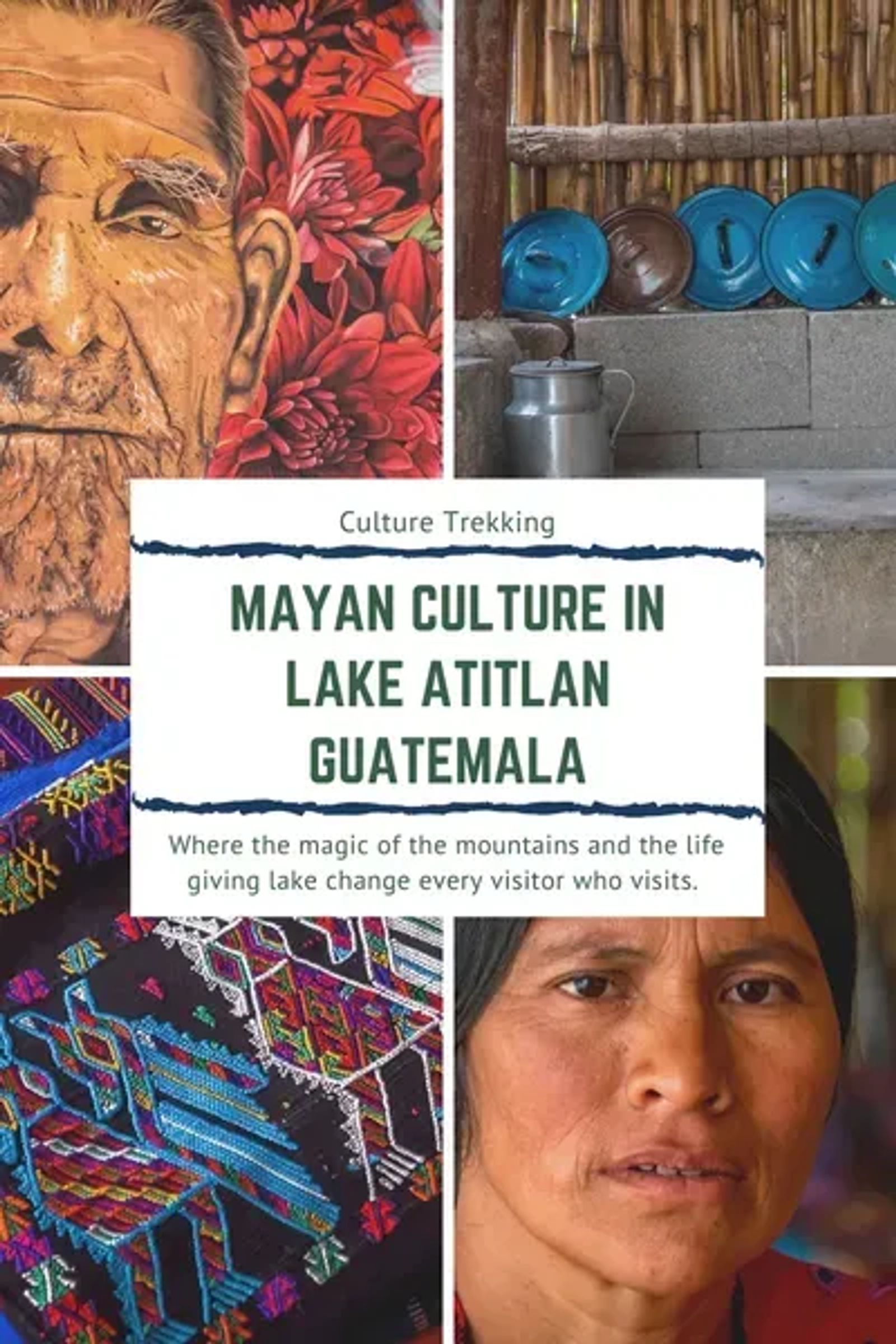


Where to Stay Near San Pedro La Laguna
San Pedro is considered the lakeside hotspot and is a straight shot across the lake from Panajachel (about a 30-minute trip and 15 quetzales/$2.00US). I would suggest staying in San Pedro for a more authentic local feeling, rather than in Panajachel where it is quite busy and chaotic.
Casa Elena is the most popular hostel located right on the lake in San Pedro. The rooms are quite cheap and have swimming and sunset viewing access. The hotel is locally owned by a friendly Mayan family, and their cleanliness ensures that you stay healthy, and sleep well during your trip.

Health and Safety Tips
ATM's are iffy - bring all the cash you need, stuff it in different places and don't carry the full amount with you
Ensure you bring a Lifestraw water bottle with you, hand sanitizer, and a buy some bleach at the local market.
Bleach your plates, spoons etc.... be sure to let it dry completely after bleaching for proper decontamination. Parasites here are common, especially in the dogs in the street. So don't play with the local wildlife unless they are owned by a family. If they are owned, they typically will be well taken care of.
Yellow Fever, Hepatitis A, and routine Vaccines are recommended by the CDC should you travel to this area.
Getting To Lake Atitlan
Getting there: Guatemala’s Lake Atitlan region is about 70 miles from Guatemala City, home to the nearest major airport. If you don't want to rent a taxi to get there (around $70 for a 3-hour trip), then I would recommend heading towards Panajachel. Getting to Panajachel will get you to Lake Atitlan and from there you can take a boat to your desired town. It would be a four-hour bus trip leading to the country’s western highlands. Please keep in mind that the buses are recycled School Buses from the States, go slow, and often crowded and don't run at night. The Rebuli bus station on 21st street and 1-34 Avenue (Zone 1) in Guatemala City leaves every day at 6, 9, and 10 a.m. for Panajachel.
Getting around: Small public boats called lanchas transport people to the different villages around the lake for anywhere from 10 to 25 quetzals, which is equivalent to about $1.30 to $3.25 U.S. There is a time schedule for the boats, and rain or shine they will take you across. I don't believe they run at night though, so be cautious in your planning when you arrive.
Once in your final destination, it is easy to travel by foot, or you can flag down a tuk-tuk and show them the name of the destination in Spanish or tell them where you would like to go.
Have you been to Lake Atitlan? What are some of your suggestions I may have missed? Leave them in the comment section below :)
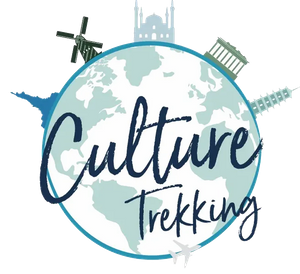

Welcome to Culture Trekking!
My name is Janiel, I specialize in solo female travel, cultural connections, sustainable adventures, food, and history to help make your travel experiences fun, meaningful, and delicious. My experience in travel and my personal story have allowed me to get published in Fodor's Travel, Atlas Obscura, Metro.co.uk, Trip Advisor, and multiple Podcast interviews. You can find me on pretty much every social media channel YouTube, Instagram, Twitter, Facebook, Pinterest, TikTok. To read more about me and my story click here. If you are a brand and would like to work with me, click here.


